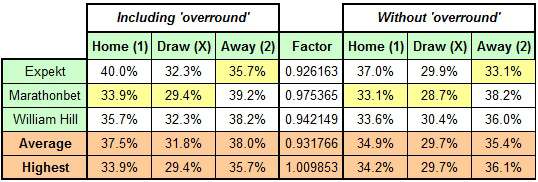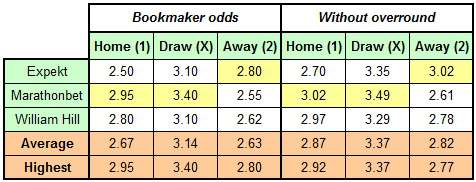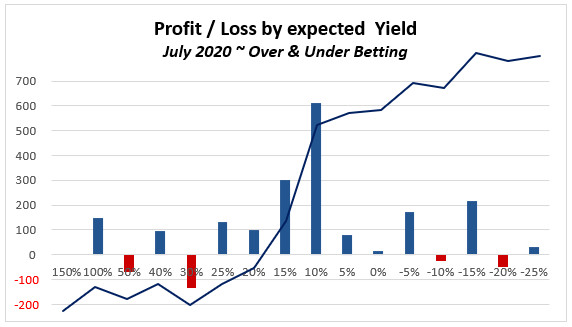
In this example, we ran the stats through our international match value betting spreadsheet and calculated the ‘true’ probability of Russia to win at 36.7%, which was fairly close to the market average of 37.5%.
However, this was not the case for the bet on Portugal to win. Our calculations showed a ‘true’ probability of 25%, which differed significantly from the range of odds in the market representing probabilities of between 33.1% and 38.2%. This was a vital factor encouraging us to recommend an Asian Handicap 0/+0.5 bet in favour of Russia when compiling our regular article for the Betfair German blog.
The match finished 1-0 to Russia.
In addition to bookmakers considering public opinion when setting their odds, you should also be aware of the fact that odds calculations are always based on relatively small statistical sample sizes, which of course, can produce a large variance between the predicted and actual outcome of the match in question.
Therefore, calculation of the probabilities of outcomes in sports is always an “approximation”. As with everything in life, there are a high number of extraneous factors and variables, which statistics alone can never hope to take into consideration.
It really does not matter which bookmaker’s odds you use for your calculations as they are ‘by definition’ already quite inaccurate. The most important thing is that your calculations should always be performed with consistency, in other words, using odds from the same bookmaker as the basis for paper testing, or always using the average odds, or the highest or lowest odds.
Removing the Overround
If at any stage you need to remove the overround from the odds of bookmakers then the odds/probabilities should be adjusted using the following factor:
– alternatively –
1 divided by (1 plus overround)

On the left hand side of the above table the converted bookmaker odds into probabilities are shown. The right hand side shows the probabilities with the overround removed (bookmaker odds multiplied with the adjustment factor).

What uses do these Adjusted Odds (overround removed) have?
The removal of the overrounds may occasionally be necessary for calculations. For example, if you wish to compare with a deal of accuracy the observed distribution against the bookmakers’ predictions. Occasionally, it may be useful when paper testing systems or theories to see what effect the overround has on the viability of your intended strategy.
Otherwise, this ‘cleansing’ process is rarely needed. The overround and adjusted odds cannot be used to judge the ‘value’ of a bet, nor can they be used as a statement of the ‘true’ probabilities for a team to win or lose. Indeed, removing the overround has no relevance whatsoever for any qualitative betting statement of any kind.
Removal of the overround is not needed for calculating the relative strength of teams for comparison reasons. The same result is reached by dividing 2.5 by 2.8 (Expekt’s home win odds divided by their away odds), or 2.7 by 3.02 (overround removed odds).
The result for both equations is: 0.892857
Indeed, for some calculations it is actually even harmful to remove the overround. For example, our Home-Draw-Away-Favourite-Underdog Betting Simulation Tables. If the overrround were removed from these calculations, especially when forecasting future profits, the results would be skewed by being based on odds that are too high and which, will never realistically exist in the market.
Except for a better understanding of the market, removing the overround from the bookmakers’ odds is rarely necessary.
The most important thing you should be aware of is that in accumulator bets the overround acts as a lever for bookmakers and guarantees higher profit margins for them.
Always remember that bookmaker odds do not necessarily represent the ‘fair’ or ‘true’ probabilities of an event. Odds may sometimes be pretty close to the correct mathematical probability calculations, but in the majority of the cases they are not.
Of course, bookmaker odds can be used as a starting point for comparison purposes but, with or without overround, the information gained from odds is pretty useless to bettors who do not fully understand the market’s mechanism and odds calculation in general.
If you would like to learn how odds are calculated then you may be interested in Soccerwidow’s course: Fundamentals of Sports Betting: Betting on Over/Under ‘X’ Goals.
Thanks as always for reading!







Hey Guys,
If I understand correctly, you used the value calculator to calculate the true odds for the match between Russia and Portugal.
But I thought the value calculator could only be used for league matches between sides which have had minimum H2H matches and matches in the league? How does that work?
Sorry as my question is off-topic for overround.